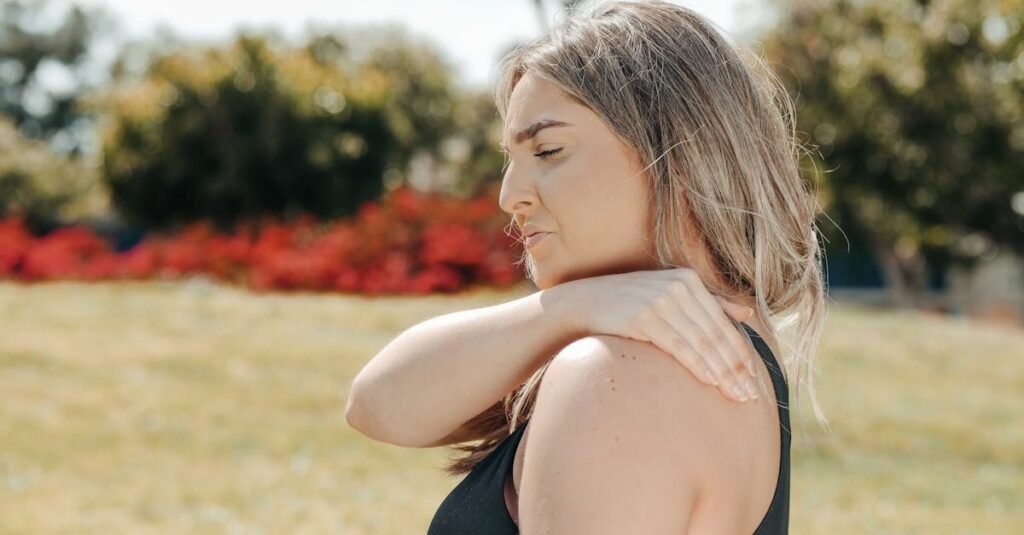Learn how the rotator cuff works, what muscles are involved, and why it’s essential for shoulder stability and arm movement, explained by a physiotherapist.
Have you ever wondered why shoulder injuries are so common—and often so frustrating to deal with? A big reason is the rotator cuff. This small but powerful group of muscles and tendons is essential for almost every arm movement you make, from brushing your hair to lifting a grocery bag or playing tennis.
In this article, we’ll break down what the rotator cuff is, what it does, and why keeping it healthy is so important. Whether you’re recovering from an injury, staying active, or simply curious about how your body works, this guide will give you a clear understanding—without the medical jargon.
What Exactly Is the Rotator Cuff?
The rotator cuff is made up of four muscles and their tendons that sit around your shoulder joint. These muscles come from your shoulder blade and attach to the top of your upper arm bone. Together, they form a “cuff” that holds the ball of your shoulder joint securely in its socket.
Here are the four key players:
- Supraspinatus – This muscle sits at the top of your shoulder blade and helps lift your arm out to the side.
- Infraspinatus – Located on the back of the shoulder blade, it enables you to rotate your arm outward, like when opening a door.
- Teres Minor – A small muscle below the infraspinatus, it also helps with outward rotation.
- Subscapularis – This muscle sits on the front of the shoulder blade and helps turn your arm inward, like tucking in your shirt.
What Does the Rotator Cuff Do?
Your shoulder is one of the most mobile joints in the body—but that mobility comes at a cost. It’s also one of the least stable joints. That’s where the rotator cuff comes in.
These muscles work together to:
- Lift and rotate your arm
- Keep the shoulder joint stable during movement
- Protect the joint by keeping the ball of your upper arm bone centred in the socket
If these muscles are weak or injured, the shoulder can become painful, unstable, or limited in motion.
Why Is It Called a "Cuff"?
Think of the rotator cuff like a stretchy sleeve or cuff that wraps around the top of your arm bone. It holds the ball of the joint in place and helps move the arm smoothly and efficiently.
How the Muscles Work Together
Each rotator cuff muscle has its own role, but they all support each other:
- The supraspinatus helps with lifting the arm.
- The infraspinatus and teres minor rotate the arm outward.
- The subscapularis rotates the arm inward.
Together, they also help control the shoulder’s position, especially during activities like reaching overhead or throwing.
Other Muscles That Support the Shoulder
The rotator cuff doesn’t work alone. Other muscles—like your shoulder blade muscles (trapezius, serratus anterior, and rhomboids)—also play a significant role. They help move and stabilize your shoulder blade so the rotator cuff can do its job properly.
If those support muscles aren’t working well, your rotator cuff can get overloaded and more prone to injury.
Nerves and the Rotator Cuff
Nerves from the neck send signals to the rotator cuff muscles, telling them when and how to move. If these nerves are pinched or irritated (like in a neck injury), it can affect how your shoulder works, too.
Takeaway Message
Your rotator cuff is small but mighty. It helps you lift, reach, rotate, and stabilize your shoulder. Keeping these muscles strong and healthy is key to avoiding shoulder pain and staying active.
📌 If you’re experiencing shoulder discomfort or weakness, consider booking an assessment with your local physiotherapist. Early action can make all the difference.
Next up: What happens when things go wrong? Part 2 covers rotator cuff injuries, symptoms, and recovery options.
References
Kuhn, J. E. (2009). Exercise in the treatment of rotator cuff impingement: a systematic review and a synthesized evidence-based rehabilitation protocol. Journal of Shoulder and Elbow Surgery, 18(1), 138-160.
Reinold, M. M., Escamilla, R. F., & Wilk, K. E. (2009). Current concepts in the scientific and clinical rationale behind exercises for glenohumeral and scapulothoracic musculature. Journal of Orthopaedic & Sports Physical Therapy, 39(2), 105-117.
Moore, K. L., Dalley, A. F., & Agur, A. M. (2018). Clinically Oriented Anatomy (8th ed.). Wolters Kluwer.
